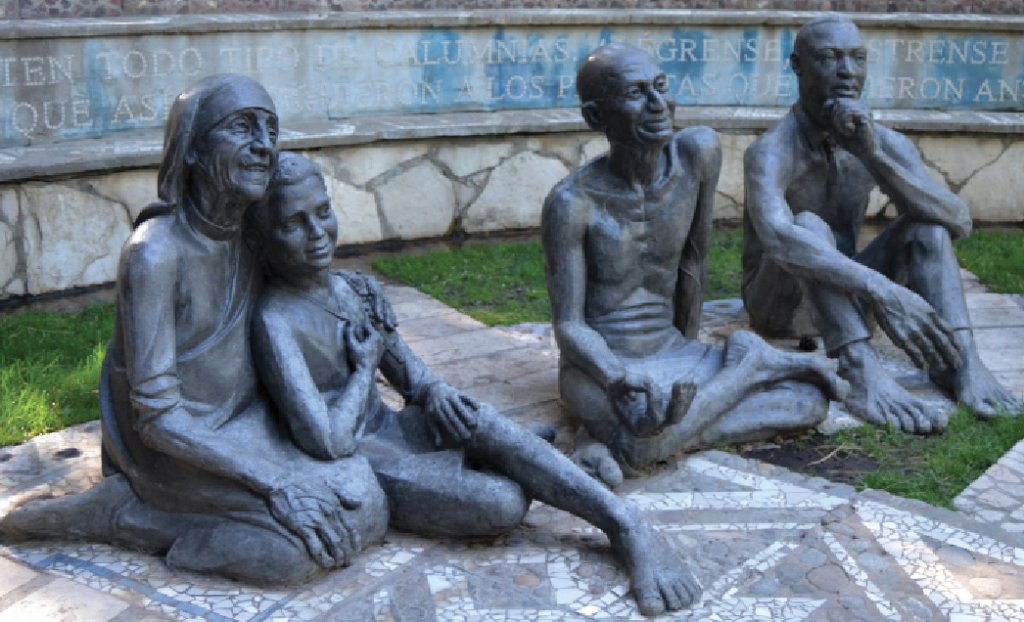Jesus! Is this art?
By Andrea Rodulfo
A sculptural depiction of the life of Christ with George W. Bush as one of the characters of the story is something quite exceptional and controversial. I found it in the Via Christi Theme Park in Junín de los Andes—a small town in the Argentinian Patagonia. Alejandro Santana’s artwork fuses art, politics and history together making a very remarkable Via Christi.
Junín de los Andes is located near the border of Chile, in the foothills of the Andean mountain range. The city is surrounded by rivers and forests; being one of these forests where this enormous outdoor gallery of art is found, at Cerro de la Cruz.
As a non-religious person, when I was told that one of the main attractions of Junín de losAndes—where I was staying for a few days—was a Via Christi, I felt a little disappointed. Never thought what I was going to find was not a religious artwork, but a revision of some aspects of recent worldwide history through art.
Santana is the artist behind the controversial Via Christi that takes life through beautiful tall sculptures, covered by little details full of meaning. He shows not only scenes of Christian history, but also evokes influences of the native Mapuche people of the region and contemporary happenings.
 Mother Teresa, Mahatma Gandhi and Martin Luther King Jr. representing the battles fought for a better world.
Mother Teresa, Mahatma Gandhi and Martin Luther King Jr. representing the battles fought for a better world.This Argentinian sculptor takes us through the life of Christ in a very unconventional way due to the characters he uses to illustrate the Via Christi. The artist represents the Via Christi through sculpture, not merely as a devoting instrument, but as a way to criticize events like wars as well as economic and political decisions that have affected entire countries through decades.
The artist addresses the most outstanding periods Argentina has gone through. One of those periods is the military dictatorship headed by Jorge Rafael Videla that took place in the mid-70s and early 80s. An estimated of 30,000 missing people are attributed to this regime. Santana uses his creations to show new generations what happened in that time, and also, as a claim to the government for justice.
George W. Bush has a provocative appearance in the tour: like the devil himself. A negative critique towards Bush’s mandate and the decisions made by the United States during this presidency. A cruel image depicting this phase in history, the sculpture shows a child lying on the ground mutilated, displaying the Iraq conflict as you can read in the text written with mosaics as part of the art piece.
Another dark phase in recent history showed in the Via Christi is the Vietnam War. Fallen soldiers with pictures on their faces show some of the war horrors lived; among the photos is the Pulitzer prize-winning “Napalm Girl” photograph, took by AP photographer Nick Ut in 1972.
Besides focusing on harsh episodes of history, Santana’s Via Christi is also dedicated to people who have made a positive impact in the world, like Mother Teresa, Martin Luther King Jr. and Mahatma Gandhi.
As you walk through the forest you pass from figures of ideological leaders to a point in which religion is the focus. You observe sculptures of women—some of them Mapuche women that live near town and volunteered as models—holding hands together, each one representing a different religion. The whole scene tries to picture the possibility of a peaceful relationship among people with different beliefs.
By the end of the tour the artist’s message is palpable: the key to a prosperous world in which people can live in harmony, is the fusion of ideologies and cultures.
Santana is convinced that all countries in the world share similarities, and the differences among them, are the ones that make each culture richer in perception and knowledge. Santana’s thought of a fused culture is what led him to build this sculpture gallery as a mixture of symbols, political/spiritual leaders’ figures, war victims’ tragedies, activists’ stories, natives’ notion of the world, plus local ideologies and personal experiences.
This work of art didn’t change the perception I have of religion; however, it certainly showed me a bit of what an artist can transmit through his interpretation of art. There are no rules an artist must follow, not even in a Via Christi.

